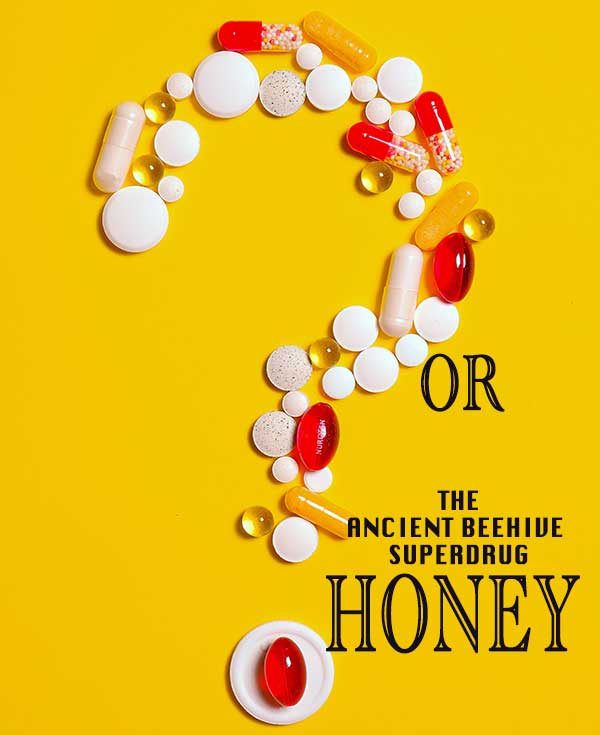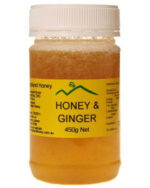ANCIENT BEEHIVE ‘SUPERDRUGS’ MAY BE THE ANSWER

In recent years, the growth in some drug-resistance has encouraged a change in perception about modern medicine drugs.
Trends are looking back to the great golden healer – honey, the superdrug, that was even prescribed by Hippocrates, the father of modern medicine, 1,600 years ago.
Honey is a nutraceutical or a medicinal food. There is no doubt that many of the medicinal, antibacterial and healing properties of honey still baffle modern scientists, but honey’s true worth and performance against infected wounds and skin infections works when everything else has failed.
Honey contains over 180 properties – a balance not available in any other food – to help us keep fighting fit internally.
Honey contains a whole array of vitamins, minerals, amino acids and water. Plus that all -important plant nutrients known as bioflavonoids, which keep the immune system functioning robustly at times of stress or when faced with bacteria, viruses and parasites.
About Bioflavonoids in Honey
The naturally bright colours of fruit and vegetables indicate the presence of bioflavonoids, which are responsible for plant pigmentation -carrots, oranges, grapefruits and sweet potatoes just ooze with carotene (yellow colour), for example, which makes them top bioflavonoids. These pigments do not only provide colour, they have bioactive effects on the body. They are potent antioxidants, protecting cells from attack by free radicals, and seem to make vitamin C work more effectively, for example in booting immunity. They also keep the heart and circulatory system in good shape, supporting the capillaries in delivery oxygen.
The best bioflavonoid to charge up the immune system is vitamin C. Your body cannot store this vitamin and therefore you need to take some in daily to ward off infection. To prevent winter infections, aim to take 1,000mg of vitamin C every day – this will equip your white blood cells, the eyes and ears’ of your immune system, to stand in the front line in the battle against infection.

Bioflavonoid is a highly active plant nutrient. The amount of bioflavonoid in pollen and honeys is indicated by its vast colour spectrums. The bioflavonoid is collected by bees from the gums and resin of trees and plants. Plants secrete gums and resin to ward off attack and infections. The bees harvest this to create sterile structures in their hive.
To up your intake of propolis, opt for darker coloured honeys (which contain the highest levels of this healer from the hive) or just take propolis itself as directed.
The type of honey is important, as some honeys have up to hundred times more antibacterial properties than others.
Curated from works by https://www.amazon.com/Honey-Natures-Golden-Gloria-Havenhand/dp/1554079152
Photo by Anna Shvets from Pexels


